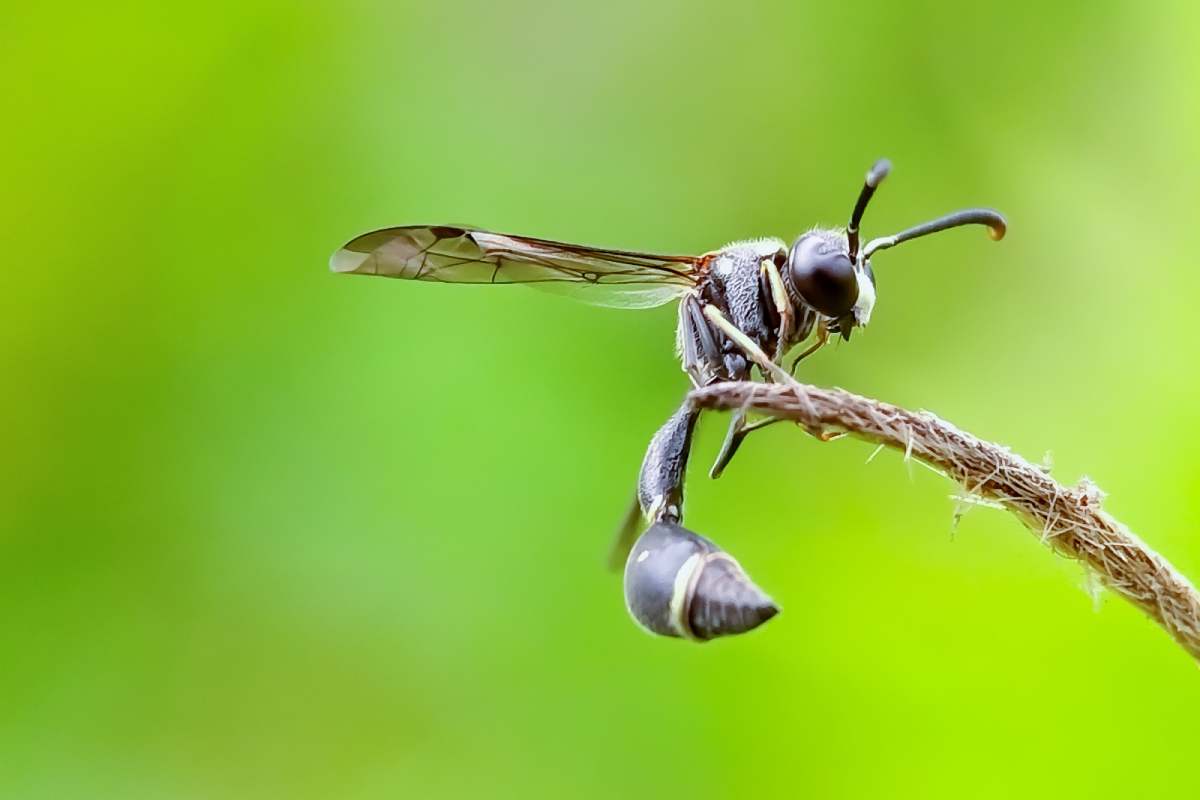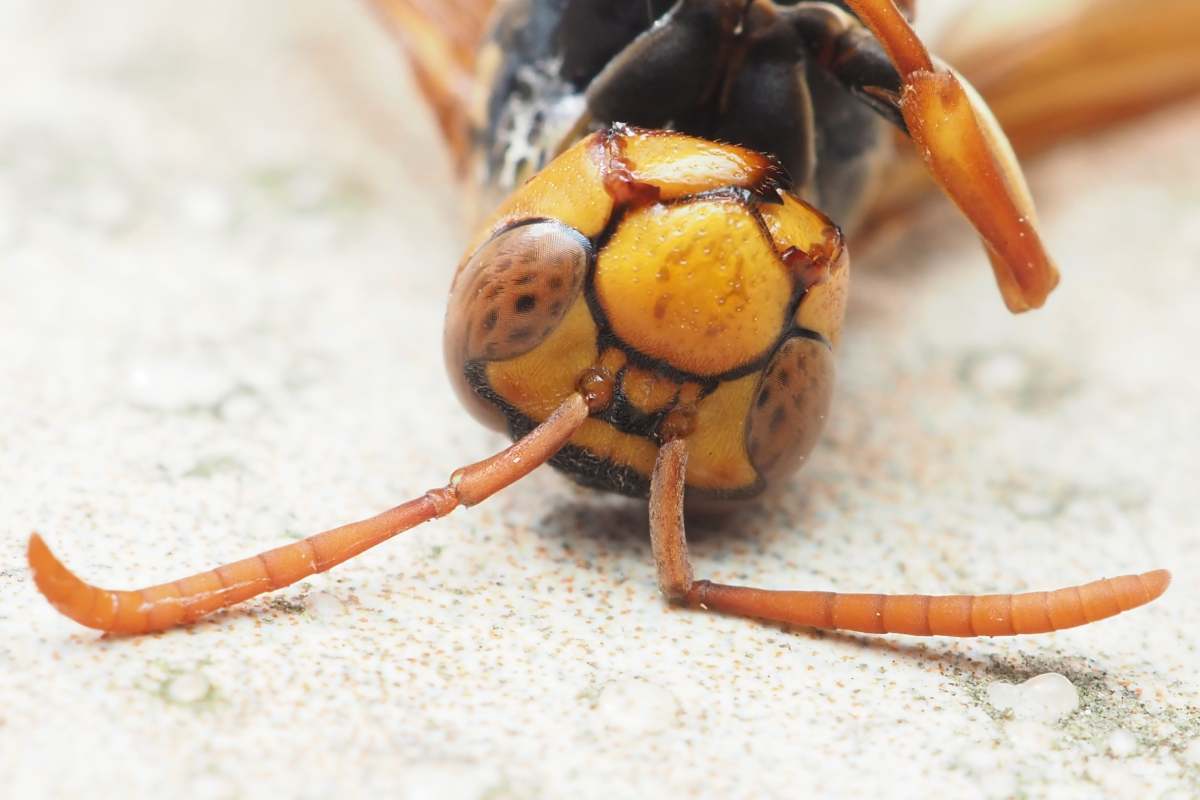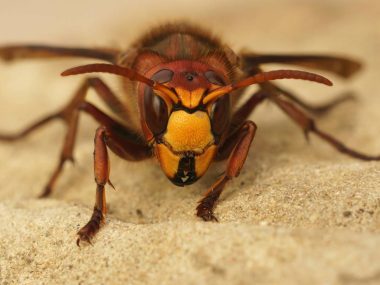Wasps, with their distinctive buzzing and sometimes painful stings, are a common sight in Australia’s diverse landscapes. From the bustling cities to the tranquil countryside, these insects make their presence known, often building nests near human habitation.
Understanding the most common wasp species in Australia is crucial for navigating encounters with these fascinating yet sometimes troublesome creatures. In this article, we delve into the top five most prevalent wasps in Australia, shedding light on their habitats, behaviours, and interactions with humans.
What are the 5 Most Common Wasps in Australia?
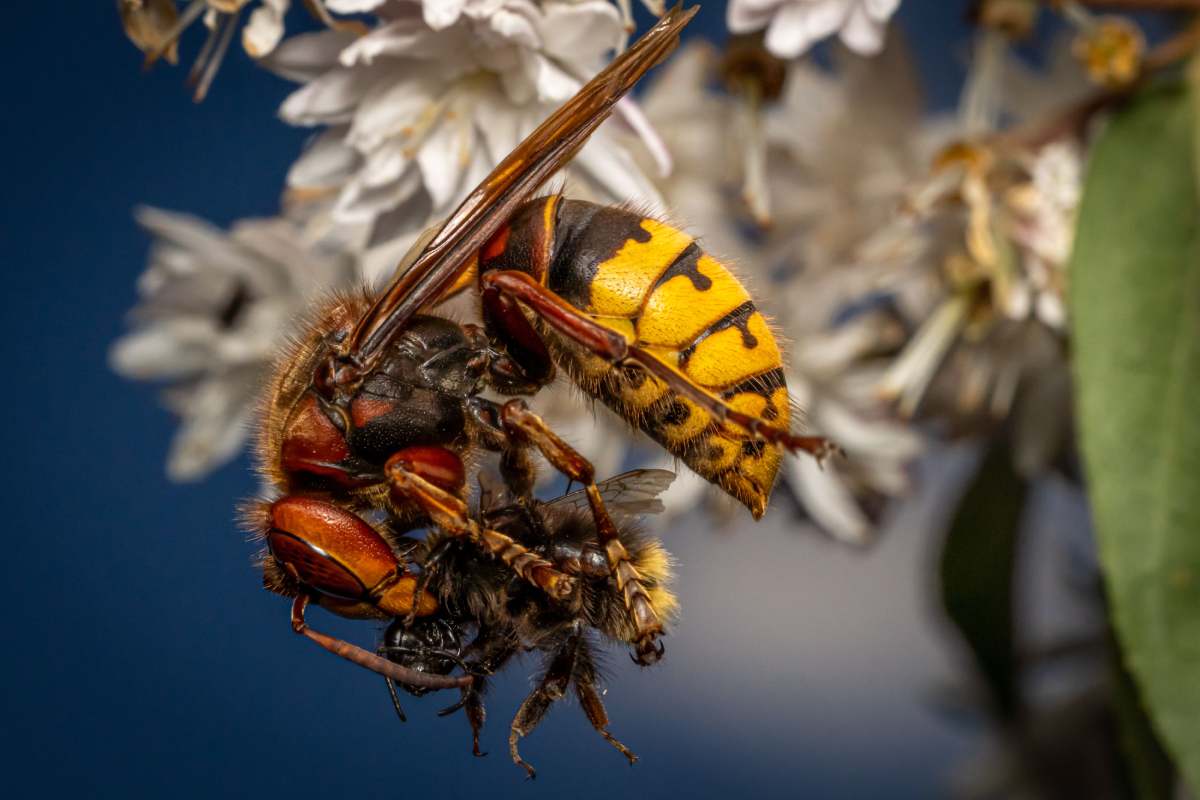
1. European Wasp (Vespula germanica)
- Description: The European wasp is about 1.2 to 1.7 cm long with a distinctive black and yellow banded abdomen.
- Habitat: They build nests in sheltered locations like wall cavities, tree hollows, and underground burrows.
- Behaviour: Highly aggressive and can sting multiple times. They are attracted to sweet foods and drinks, making them common around picnics and outdoor gatherings.
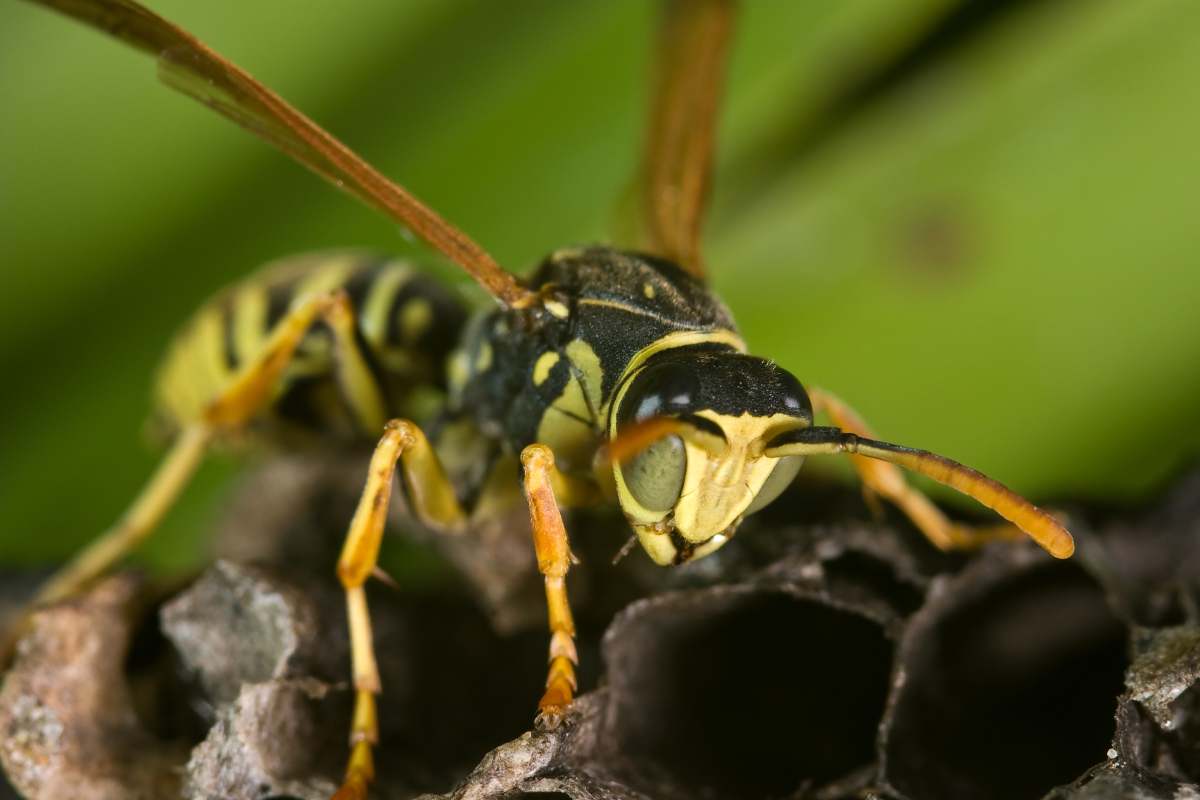
2. Paper Wasp (Polistes species)
- Description: Sometimes called ‘Australian hornet‘. Paper wasps are about 1.5 to 2.5 cm long with slender bodies and long legs. They can be in various colours, including yellow, brown, and red.
- Habitat: They build open, umbrella-shaped nests made of a papery material in sheltered areas like eaves, shrubs, and trees.
- Behaviour: Less aggressive than European wasps but will defend their nests if threatened. They are beneficial as they feed on caterpillars and other garden pests.
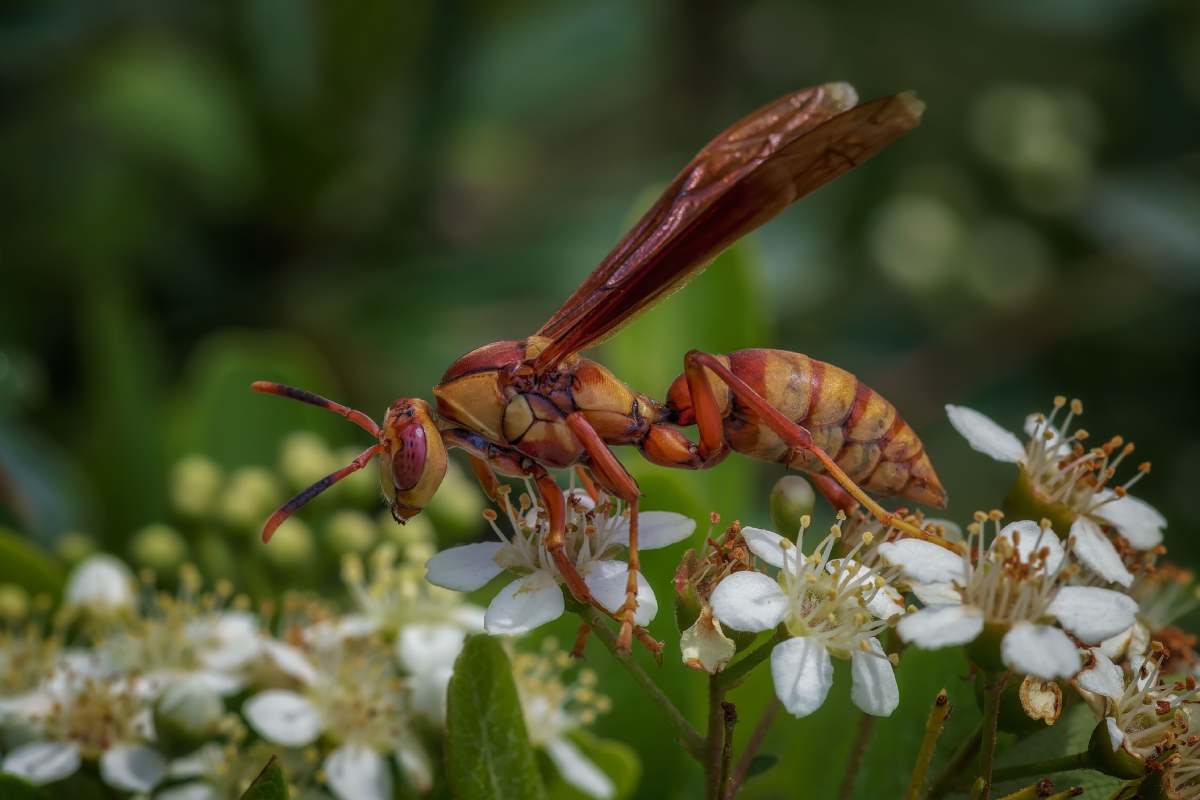
3. Common Brown Paper Wasp (Ropalidia romandi)
- Description: This wasp is about 1 to 1.5 cm long with a reddish-brown body and darker wings.
- Habitat: Similar to other paper wasps, they build papery nests in sheltered locations.
- Behaviour: They are generally non-aggressive but will sting if their nest is disturbed. They are also beneficial for controlling insect populations.
4. Mud Dauber Wasp (Sceliphron laetum)
- Description: Mud daubers are about 2 cm long, with slender waists and metallic blue-black bodies.
- Habitat: They build nests out of mud, often on buildings, bridges, and other structures.
- Behaviour: Non-aggressive and rarely sting humans. They are solitary wasps that prey on spiders and other insects to feed their larvae.
5. Yellow Paper Wasp (Polistes dominula)
- Description: Similar in size and appearance to the common paper wasp, with a more yellow colouration.
- Habitat: Builds papery nests in sheltered areas like roof eaves and garden shrubs.
- Behaviour: Known for being somewhat more aggressive than other paper wasps but still beneficial for pest control in gardens.
These wasps are often encountered due to their nesting habits and the fact that many are attracted to human food and activities. While some can be aggressive, others play important roles in the ecosystem by controlling pest populations.
What should we do if we get stung by a wasp?
When a wasp stings you, it injects venom into your skin, causing different reactions. Most people just feel some pain, redness, swelling, and itching around the sting area, which usually goes away in a few days.
Sometimes, you might have a bigger reaction with lots of swelling and redness spreading beyond where you got stung. These reactions can be more uncomfortable and take longer to go away.
Allergic reactions can happen too. You might get itchy all over, hives, have trouble breathing, feel dizzy, or swell up in different parts of your body. These are serious and need quick medical help because they can be life-threatening.
Here’s what you can do right after a wasp sting:
- Stay calm and help the person who got stung to stay calm too. It helps reduce anxiety.
- Wash the sting spot with soap and water to clean it up. This lowers the chance of getting an infection. Unlike bees, wasp stingers don’t stay in your skin.
- Put something cold on the sting. It helps with the pain and swelling. You can use a cold pack or wrap ice in a cloth, but don’t put ice directly on your skin.
- You can also try using hydrocortisone cream or calamine lotion. Put a little bit on the sting to help with redness, itching, or swelling.
- Keep an eye on the person for signs of an allergic reaction. Watch out for stuff like trouble breathing, feeling dizzy, or swelling in their face, throat, or tongue. If any of these happen, call emergency services right away.
Always get help from a doctor if things get worse or if the person has a bad allergy to wasp stings. Following these steps can make the sting feel better and ease the discomfort.
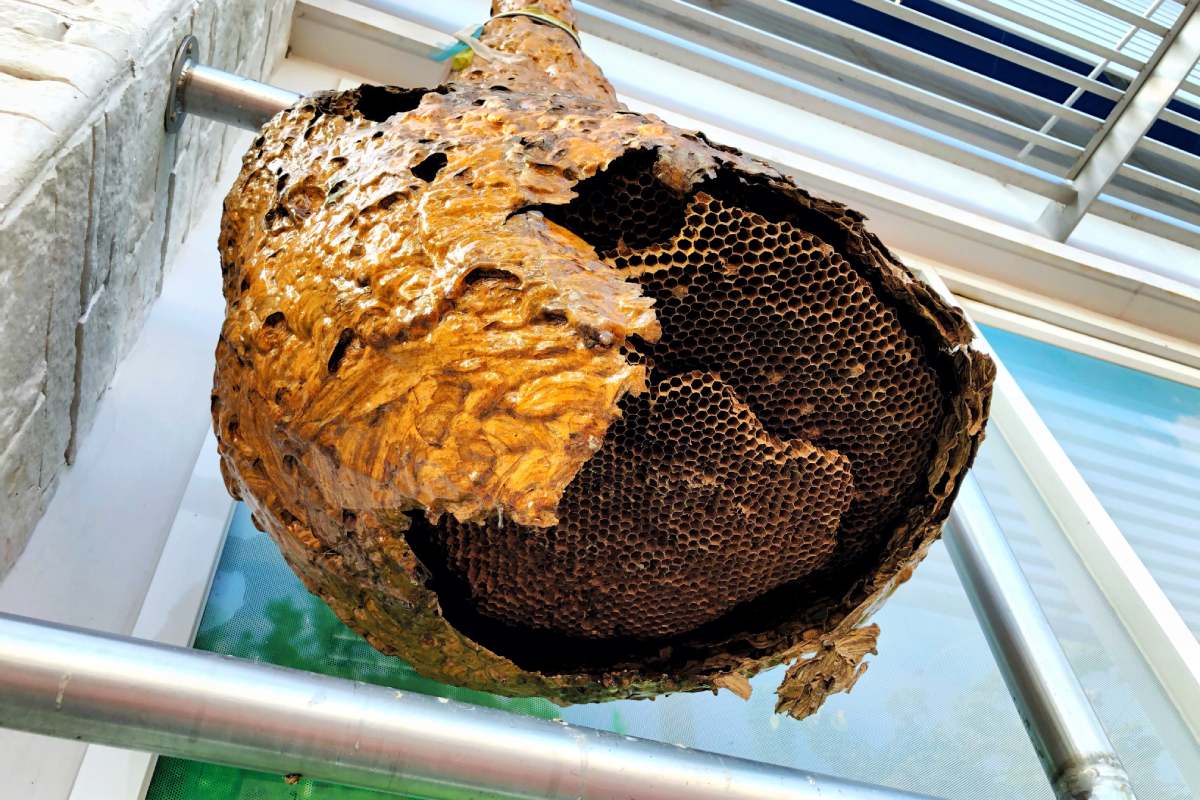
What should I do if there is a wasp nest near my house?
If you discover a wasp nest near your house, it’s essential to handle the situation carefully to minimize the risk of stings and ensure the safety of yourself and others. Here’s what you can do:
1. Stay Calm:
- Keep calm and avoid making sudden movements near the nest. Agitation can provoke defensive behaviour from the wasps.
2. Assess the Situation:
- Determine the size and location of the nest. Small nests located away from high-traffic areas may be easier to manage than larger nests in densely populated areas.
3. Avoid Disturbing the Nest:
- Do not attempt to disturb or agitate the nest. This can provoke the wasps and increase the risk of stings.
4. Keep Children and Pets Away:
- Ensure that children and pets are kept away from the area where the nest is located to prevent accidental disturbances.
5. Secure Outdoor Food and Drinks:
- If you’re planning to spend time outdoors near the nest, keep food and drinks covered to avoid attracting wasps.
6. Use Caution During Outdoor Activities:
- Be cautious when mowing the lawn, gardening, or engaging in other outdoor activities near the nest. Slow and deliberate movements can help avoid disturbing the wasps.
7. Consider Professional Removal:
- Safety Assurance:
- Expert Pest Control services have the expertise and equipment to safely deal with wasp nests without putting themselves or others at risk. They are trained in handling insecticides and protective gear to minimize the chance of stings.
- Specialized Knowledge:
- Pest control professionals understand the behaviour and biology of wasps, allowing them to develop effective strategies for nest removal. They can identify the species of wasp, assess the size and location of the nest, and determine the most appropriate method of eradication.
- Proper Equipment:
- Expert pest control companies have access to specialized equipment and tools for removing wasp nests, such as long-reaching poles, protective suits, and insecticidal sprays. This equipment ensures that the removal process is conducted safely and effectively.
- Risk Mitigation:
- Large or difficult-to-reach nests pose a higher risk of injury or aggravation to homeowners attempting DIY removal. Professional pest control services can mitigate these risks by using proper safety measures and techniques to eliminate the nest.
- Guaranteed Results:
- Many expert pest control companies offer guarantees or warranties on their services, ensuring that the wasp nest is completely eradicated and that any recurring issues are addressed promptly.
- Legal Compliance:
- Some jurisdictions may have regulations regarding the removal of certain species of wasps or the use of insecticides. Expert pest control services are knowledgeable about local laws and regulations and can ensure compliance with legal requirements.
- Peace of Mind:
- Hiring an expert pest control to remove a wasp nest provides peace of mind, knowing that the problem is being handled by trained professionals. This allows homeowners to focus on other priorities without worrying about the risks associated with wasp nests.
8. DIY Removal (With Caution):
- If you decide to remove the nest yourself, do so cautiously and only if you’re confident in your ability to do it safely.
- Wear protective clothing, including long sleeves, pants, gloves, and a face mask, to minimize the risk of stings.
- Wait until nighttime when the wasps are less active and less likely to sting.
- Use an insecticidal spray specifically labelled for wasp nests, following the instructions carefully.
- Keep a safe distance from the nest and avoid standing directly underneath it while spraying.
- After treating the nest, monitor it for a few days to ensure that all activity has ceased before removing it.
9. Dispose of the Nest Properly:
- Once the wasps have been eliminated, carefully remove and dispose of the nest to prevent future infestations.
10. Prevent Future Nests:
- Take steps to prevent future wasp nests by sealing potential entry points around your home, such as cracks, crevices, and holes.
By following these steps, you can safely manage a wasp nest near your house and minimize the risk of stings and other problems associated with wasp infestations. If you’re unsure or uncomfortable handling the situation yourself, don’t hesitate to seek professional assistance.
Conclusion
Finding a wasp nest close to your home can be tricky, but with the right know-how and safety steps, you can handle it well. Whether you choose to call in the pros or go the DIY route, keeping safe should always be your top concern. By being proactive about dealing with wasp nests and stopping them from coming back, you can live peacefully with these important pollinators and keep your home safe from any dangers. And hey, if you’re ever unsure or it’s too tough to handle, getting help from the experts is a smart move.

